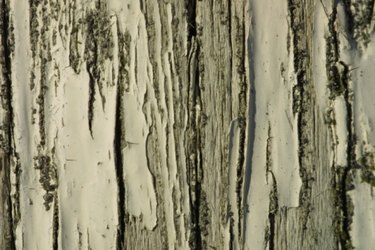
Molds are caused by fungi, and trees are susceptible to various pathogenic fungi. Fungi that decay, or rot, the tree are divided into three types: soft rots, brown rots and white rots. These types of infections can be serious, and some fungal species kill trees in just a few years if they go unchecked. Severe cases of heart rot, which decays tree wood from the inside out, also pose the risk of causing large limbs to fall unexpectedly.
White Rot Versus Brown and Soft Rots
Video of the Day
Brown rots are the most serious of the three rot types. They damage trees primarily by decaying the carbohydrates in the wood, leaving behind the lignin, which is brown. Trees affected by brown rot have dry, fragile bark that easily crumbles into cubes and, often, a solid column of rotted wood in the trunk. Soft rots -- caused by both bacteria and fungi -- decay carbohydrates and lignin in the wood, but the infection is usually localized. White rots affect the lignin and cellulose in wood; infected wood looks white or yellow and feels soft, moist, stringy or spongy.
Video of the Day
Heart Rot
Heart rot, which often produces white rot, can cause extensive damage to trees. It decays the wood of trunks, branches and roots from the inside out, so the damage often goes unnoticed until it becomes severe. Trees that are substantially weakened due to other stresses at the time of infection are particularly susceptible to potentially fatal damage. Once a fungus that causes heart rot is established, it produces conks or mushrooms, which are fungal reproductive structures.
Powdery Mildew
Nearly every species of tree and shrub is vulnerable to powdery mildew, which produces a white, moldy substance on leaves. This white material is composed of millions of minute fungal spores, which then carry on the wind to infect other plants. Crabapple, lilac, linden, chokecherry and catalpa are particularly vulnerable to powdery mildew, though it rarely causes serious problems.
What To Do
Decaying, fungal disease primarily affects old trees or individuals that are weakened by stress, such as from storms, droughts or other pathogens. If the tree is diseased enough to present a risk from falling branches, it will need to be trimmed or removed. Keeping trees healthy by pruning them when young to build good structure will help them in their later years, as will learning proper pruning techniques. Occasional or late-season powdery mildew infections rarely need attention, but a sulphur spray of 2 to 4 lbs. per 100 gallons will likely reduce the problem. Do not use sulfur on walnuts.